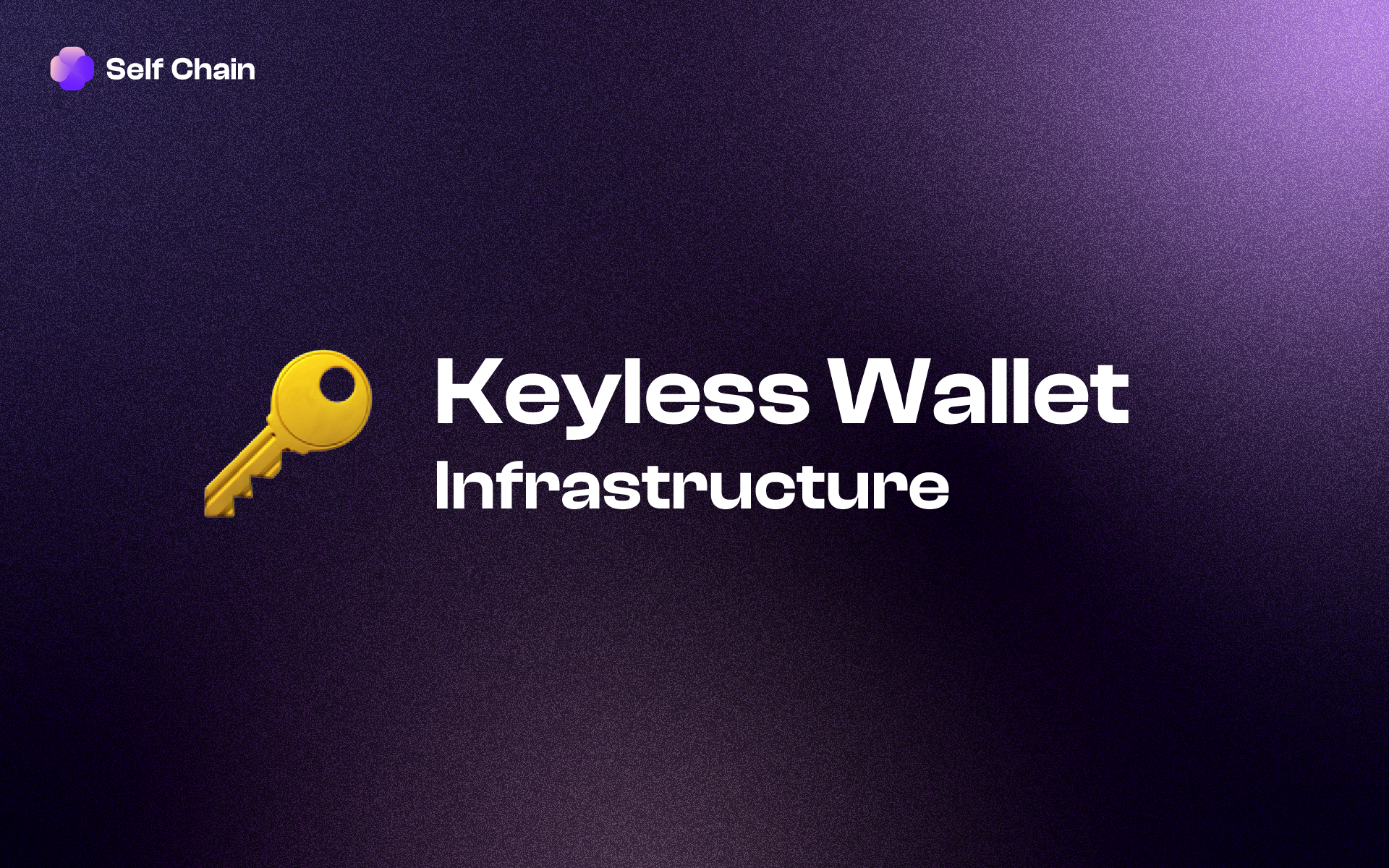A Walk-through to Self Chain's Keyless Wallet Infrastructure
Unlocking the Future: Self Chain's Trailblazing Approach to Secure, Effortless Keyless Wallets.

In the fast-evolving world of cryptocurrencies and decentralized applications (dApps), security and usability are of paramount importance. Self Chain, a cutting-edge Layer 1 blockchain network, has emerged as a game-changer in the realm of keyless wallet infrastructure. By integrating state-of-the-art cryptographic techniques and multi-party computation (MPC), Self Chain serves as a secure and reliable storage medium for keyless wallets in the Web3 ecosystem. In this article, we will take you on a journey to explore the step-by-step process of how Self Chain works with keyless wallets, offering users unprecedented convenience and peace of mind in managing their digital assets.
Step 1: Wallet Initialization - A Seamless Start To begin their keyless wallet journey, users simply download and install the Keyless wallet mobile app or desktop application. Upon launching the app, users are greeted with a user-friendly onboarding process that requires no complex mnemonic phrases or private keys. They only need to authenticate their identity using their phone number or email.
Step 2: Multi-Party Computation (MPC) - A Collaborative Approach The magic behind Self Chain's security lies in its implementation of Multi-Party Computation (MPC) protocols. This cryptographic technique enables the generation of a unique private share for each user. Unlike traditional wallets that rely on a single private key, Self Chain's MPC divides the private share among multiple nodes on the network. This collaborative process ensures that no single entity has access to the complete private key, significantly reducing the risk of theft or unauthorized access.
Step 3: Distributed Storage - Enhancing Redundancy and Security The private share generated through MPC is securely stored in a distributed manner across various nodes on the Self Chain network. This decentralized storage approach enhances data redundancy and resilience, fortifying the security of the private share against potential breaches.
Step 4: Transaction Signing - Empowering Secure Transactions When users initiate a transaction, the keyless wallet app interacts with the Self Chain network, utilizing the private share. The nodes on the Self Chain network, through the power of MPC, collectively compute the digital signature needed to sign the transaction securely. The signed transaction is then broadcasted to the blockchain network for verification and inclusion in the next block.
Step 5: Backup and Recovery - A Safety Net
To ensure a safety net, the keyless wallet app employs a two-fold backup and recovery process, providing enhanced protection for users' digital assets.
Secure Encryption and Distribution:
During the wallet initialization process, the keyless wallet app securely encrypts the private share and distributes it in two ways. One share is sent to the user's designated email or phone number, and the other share is stored on the Self Chain network. This distribution strategy ensures redundancy and safeguards against potential data loss.
Effortless Recovery:
In the unfortunate event of a lost or damaged device, users can effortlessly recover their wallet and regain access to their digital assets. To initiate the recovery process, users retrieve the encrypted private share from their designated email or phone number. Additionally, the app retrieves and decrypts the other share from the Self Chain network. By combining these two shares, users can fully restore their wallet, allowing them to continue managing their digital assets securely.
Step 6: Seamless Integration - Unlike traditional storage platforms, Self Chain does not store data; instead, it securely manages and distributes the private shares generated through Multi-Party Computation (MPC) protocols. Users no longer need to remember or manage complex private keys, making the integration process effortless and user-friendly. Self Chain's compatibility with a diverse array of dApps enhances the overall user experience, empowering individuals to explore and participate in the expanding Web3 ecosystem with confidence and ease. This seamless integration fosters a vibrant and interconnected crypto ecosystem.
Step 7: Enhanced Security and Usability - Empowering Users Self Chain's innovative approach to keyless wallets combines advanced cryptographic techniques with a user-centric design. By eliminating the need for users to store mnemonic phrases or private keys on their devices, Self Chain significantly reduces the risk of potential theft or unauthorized access. This enhancement in security and usability makes keyless wallets on Self Chain an ideal choice for newcomers and experienced crypto enthusiasts alike.
Self Chain's integration with keyless wallets marks a pivotal moment in the evolution of secure and user-friendly digital asset management. Through the power of MPC, distributed storage, and seamless integration with the Web3 ecosystem, Self Chain empowers users to confidently navigate the world of cryptocurrencies and dApps with peace of mind. As the revolution of keyless wallets gains momentum, Self Chain stands at the forefront, paving the way for a decentralized future where security and convenience harmoniously coexist.
About Self Chain
Welcome to Self Chain, a Layer 1 blockchain designed for trustless, next-generation key management. Self Chain offers a secure infrastructure for keyless wallets and ensures enhanced security and user control through advanced technologies like Multi-Party Computation (MPC) and Threshold Signature Scheme (TSS).
Join us as we shape the future of finance, privacy, and digital ownership. Unlock the true potential of blockchain technology with Self Chain and be part of the decentralized movement.
